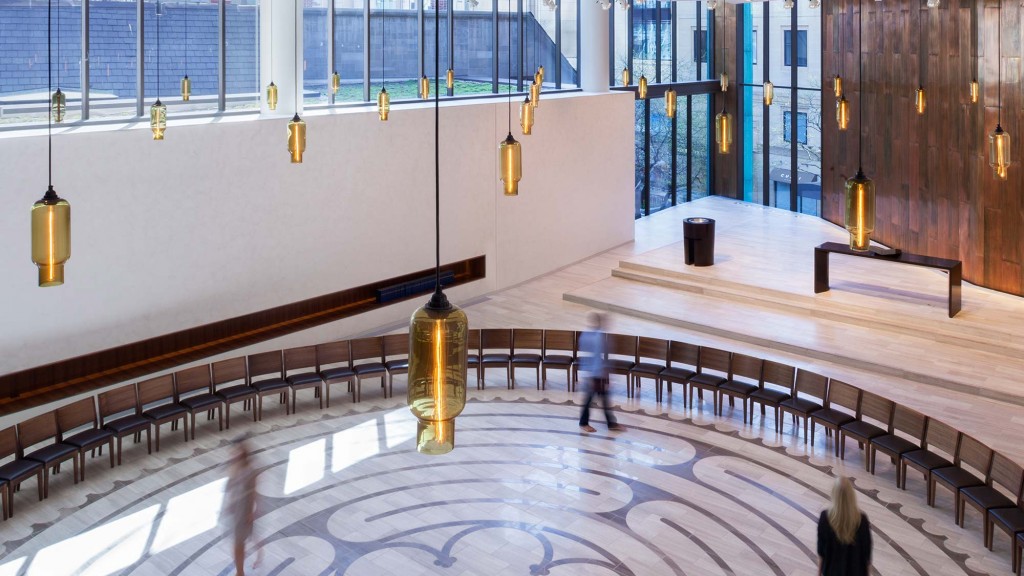Can holistic design strategies improve health and healing?
Soul-Centered Design
What We Did
We gathered articles and case stories from various health and wellness journals and periodicals to develop a more detailed understanding of the characteristics and value of design to promote wellness. We then conducted interviews with thought leaders and experts in the field of health and wellness to build on this knowledge. Our goal was to take the broad topic of health and wellness and document specific information to inform the design of interior environments to promote these ideals.
The Context
The health challenges of modern society necessitate a health renaissance, a return to a holistic approach to health and wellness that goes well beyond Western medical techniques. We perceive an increasing openness and need for new standards and types of care, leading to the increasing use of Western and Eastern wellness strategies in tandem to improve health and heal the whole individual—mind, body, and soul.
A key aspect of this emerging need consists of the recent shifts in technology. While new technology often represents forward progress, it can also challenge the health of individuals and society. As the pace of change accelerates, largely due to technological advances, our wellness is compromised if we lose the ability to reflect and retreat. Obesity, cancer, mental disorders, and issues surrounding aging are among the many significant areas in which the impact is apparent. Our research seeks to promote design as a key element to address this modern-day imbalance.
The Results
The importance of an approach to wellness that is broader than a focus on treatment and physical illness is clear. A holistic approach that addresses emotional and spiritual factors can fortify wellness at a greater scale. The design of space is a key aspect to these strategies and an opportunity to go beyond the physical, connecting with and addressing the human experience in its entirety.
Connections to nature quickly emerged as a key theme. Views of nature from patient rooms have been shown to improve healing time and reduce the need for pain medication. The effect goes further—connections to nature also have restorative power that translates to greater attention capacity, health, and life satisfaction. The need to maintain connections to nature becomes increasingly dire as the world’s population shifts toward urban living.
The needs of an aging population were also a significant focus of our interviews with leaders in health and wellness. Familiarity, intuitive way-finding, and environmental cues are important environmental aspects, particularly for those struggling with dementia or Alzheimer’s. The ability to navigate a space easily is also a key strategy for those looking to promote greater physical activity among an increasingly sedentary, desk-based population. The potential benefits of increased activity are not only physical (addressing obesity, heart disease) but also emotional, as increased exercise is connected to greater levels of happiness and energy.
What This Means
Elevate the physical experience. The design of physical space has far-reaching effects on human well-being. Connections to nature, intuitive navigation, and spaces that support activity and engagement are key attributes of wellness-based environments.
Use design to connect emotionally. The wellness impact of space goes beyond physical health or experience. Design also has an impact on social interaction as well as emotional experience and well-being, including the support of positive emotional states that have been linked to better health, longer life, and greater overall well-being.
Allow for spirituality and reflection. The restorative powers of natural environments and those that allow people to reflect are significant. Restorative environments have been shown to improve concentration and self-control, with potential effects including improved work performance and better eating habits.
What’s Next?
We continue to interview and document the perspectives of key thought leaders to broaden our understanding. While our initial discussions focused on healing environments and addressing the needs of the aging, we found that wellness can be promoted in myriad ways and space types. In addition, we hope to create integrative medicine and holistic design tools and guidelines to continue to engage designers with these concepts.
Learn More
Team
Dianne Kraus, Barbara Bouza, Melody Lee, Angelica Singh (consultant)
Year Completed
2013
Comments or ideas for further questions we should investigate?
